Child’s Pose in Sanskrit (‘Bala’, means ‘child’, 'asana' means 'pose'). Balasana or Child’s Pose is generally practiced at the end of an intense yoga sequence where the connection of the breath and the movement of the body would have been lost. The practice of Balasana concluding such a sequence, allows one to come to peace with the body with the connection of the breath. No doubt all yoga poses should lead to the connection of the breath and the body, but certain poses are challenging where the chest and the abdomen are compressed or pulled, creating uneasiness with the breathing. With Balasana, the spine remains relaxed in a forward fold and forces one to focus on breathing with the compressing of the abdomen and the chest towards the tummy. On the other hand, Balasana can be used purely as a restorative pose to heal patients with severe backaches, and insomnia, treat blood pressure, or just simply bring stress levels down. Child Pose is considered a base pose as child pose variations can be derived from this pose. Child Pose helps boost energy in the body and hence can be included in different yoga sequences. Child Pose is considered a warm-up and restorative yoga pose to prepare or restore the body before or after more intense yoga poses.
Morning Yoga For Beginners: A Quick And Simple Routine
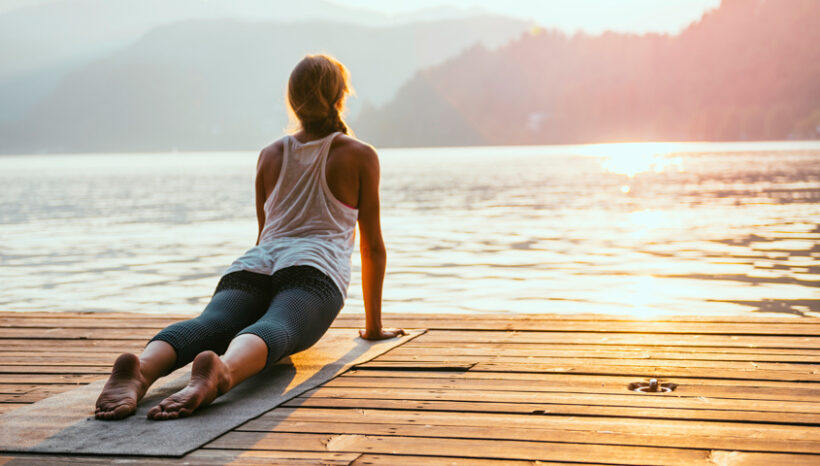
Starting your day off by connecting your body and mind is the most energizing and powerful experience we all need! It will support you in preparing for a successful and joyous day. Early morning yoga can help you build a robust and consistent routine for your daily yoga practice.
Rising with the sun might not be easy for everyone, and if you are starting, there is no need to feel overwhelmed. Even the most straightforward morning yoga routines have many benefits. This quick and simple 30 minutes morning yoga routine for beginners will help you get familiar with the basics. It will also help you establish confidence in practicing your daily routine.
How Morning Yoga Benefits Your Health
Mental health problems such as anxiety, stress, depression, and insomnia are just a couple of reasons individuals seek help in yoga.
Morning yoga is associated with a long list of advantages for our mental and physical health. You might find yourself surprised to learn that they go from improved strength to flexibility and improving your heart health.
- Emotional Health Benefits. A consistent morning yoga practice will help you achieve many emotional health benefits, including mental clarity. Morning yoga helps create stillness in the mind, which brings you peace and results in happiness. Being always overwhelmed and mentally exhausted puts you at high risk for burnout. With controlled breathing and exercises, you will be able to reduce your anxiety and release negative energy. Remember, only with a clear mind, will you be able to think clearly.
- It Improves the overall quality of your Sleep. Depression and stress can cause sleep deprivation. It can build a cycle that will make you feel constantly irritated and tired. Beginning your day with morning yoga can help you regulate your natural sleep cycle.
- Focus. Morning yoga will help you get a fresh start in the day and focus on your daily tasks. Breathing techniques and body movement will help you clear your mind to concentrate on the right things.
- Get Toned. Morning Yoga can boost your metabolism to burn more calories. Stretching, balancing techniques, and holding of poses will help you lose excess weight and get a more toned appearance.
- Increases Your Blood Flow. Morning Yoga will get your blood flowing. The exercises will boost your circulation, especially in your arms and legs, which will result in more oxygen in your cells. It also increases the level of hemoglobin and red blood cells, which transport oxygen to the tissues.
Morning Yoga Poses for Beginners at Home
Here is a couple of morning yoga poses you can easily practice at home to wake up your body and fill it with energy throughout the day. Practicing these asanas every morning will also help you to improve your flexibility and strengthen your back.
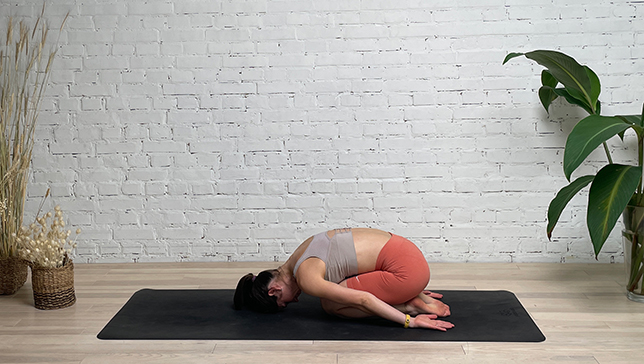
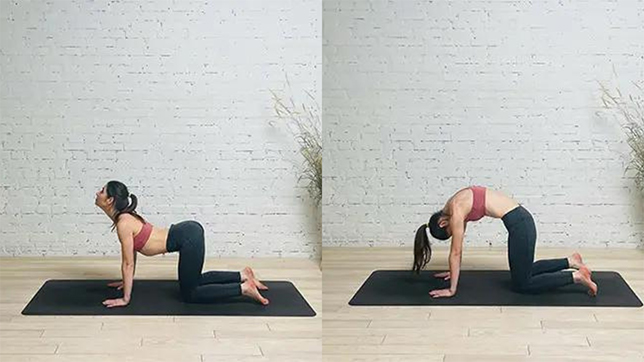
Cat-Cow Pose or Marjaryasana-Bitilasana in Sanskrit ( ‘marjari’ meaning ‘cat’, ‘bitila’ meaning ‘cow’, and 'asana' means 'pose') is a combination of two poses practiced together to gently warm up the spine and the abdomen for more challenging postures or is sometimes also practiced as a simple restorative pose. Coming on all fours, gently moving the back in a rhythmic way, and taking the position like that of a cat or a cow, releases the tensions around the spine and shoulders and tightens the abdomen to make a stronger core. Cat Cow Pose is considered a base pose as Cat-Cow Pose variations can be derived from this pose. Cat-Cow Pose helps boost energy in the body and hence can be included in different yoga sequences. Cat-Cow Pose is considered a warm-up yoga pose to prepare the body for more intense yoga poses or flows.
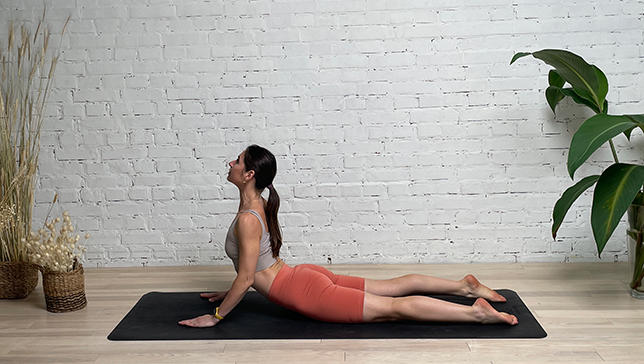
In Cobra Pose or Bhujangasana in Sanskrit, the body resembles a serpent with its hood raised. This yoga pose is considered a very powerful backward bending yoga pose in Hatha Yoga. Cobra pose comes under the category of 'lying down on the stomach' yoga poses.
As this asana is considered powerful like the Cobra snake, a lot of care should be taken while going into the pose and coming out of the pose. Any jerks of the back while going into the pose can cause discomfort to the back and can also cause injury. While releasing too, the body must drop down slowly and not with a jerk.
Cobra Pose is considered a base pose as cobra pose variations can be derived from this pose. Cobra Pose helps boost energy in the body and hence can be included in flow yoga sequences.
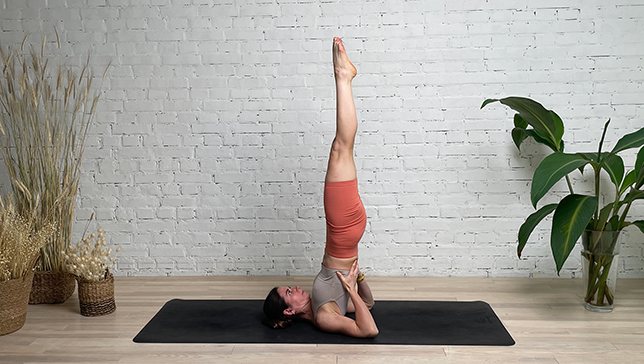
Shoulderstand Pose or Salamba Sarvangasana in Sanskrit (salamba, meaning "supported," sarva, meaning "all," anga meaning "limb," and asana, meaning "pose" or "posture."). This translates to 'All Body Parts Pose'. Salamba Sarvangasana is also known as the "Mother of all Yoga Poses" because it benefits the entire body and also the mind. Shoulderstand Pose (Sarvangasana) can be categorized under intermediate-level yoga poses. To practice this asana, yoga practitioners should have some level of comfort with various intermediate-level yoga poses. As the entire body is balanced on the upper shoulders this pose is also called 'Kandrasana' or 'Shoulderstand Pose'. Sarvangasana is considered a base pose as Sarvangasana variations can be derived from this pose. Sarvangasana helps calm the mind and turn on the parasympathetic system, hence can be included at the end of yoga sequences.
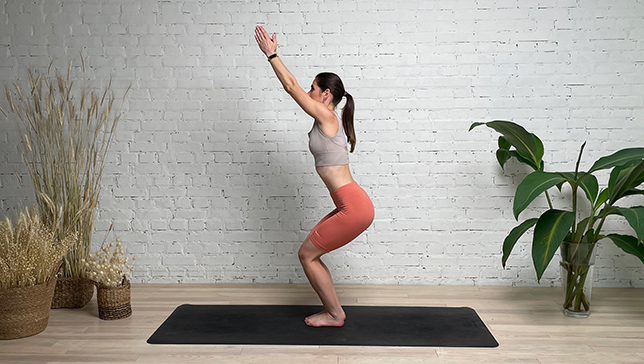
Chair Pose, also known as Utkatasana in Sanskrit, is a standing yoga posture that challenges the strength and stability of the lower body.
Though Utkatasana is also called Chair Pose, one should not think that the meaning of 'utkata' in Sanskrit means 'chair'. This pose is mainly referred to as the Fierce Pose where 'Utkata' means 'violent', 'fierce', or 'severe'. This pose is also called the Chair Pose just because the posture resembles one sitting on an invisible chair.
This pose is one of the first poses in the Sun Salutation B series. It needs ample strength with the quadricep muscles to help your hips get the right support and give the knees comfort to hold the pose for long. Working on the alignment of the hips along with the knees and the pelvic region is very essential to get comfortable in this pose.
Chair Pose is considered a base pose as chair pose variations can be derived from this pose. Chair Pose helps boost energy in the body and hence can be included in different yoga sequences.
Morning Yoga Meditation For Beginners
If you’re feeling like you would like to start meditating but not sure how to start by taking a few small steps. Begin by setting your intention to meditate and try sticking to it. Set a reminder on your phone and meditate when prompted.
You shouldn’t expect to be great at it at first, especially if you’re a beginner, but remember, practice makes perfect. That’s why it’s called a practice. Make sure to come back every day and give your mind a rest for at least ten minutes a day.
There’s scientific evidence proving that meditation is good for your health — reducing high blood pressure, helps decrease metabolism, improves heart rate, brain waves, and breathing.
Frequently Asked Questions (FAQ)
You could start with the intention of doing it. Every morning when you wake up, start doing small sequences of just 10 minutes, increasing with time. By the time you’ve come to a 21-day mark, you should have your new habit of practicing a yoga set. Start noticing how you feel after each practice and stick to your new routine. Many scientifically proven studies show how yoga can benefit you. You have to surrender.
One of the best things about yoga is that there are no rules. You can do it whenever it works for you. Some people don’t even get out of their pajamas while others like to have their coffee and then practice. The most important thing is that you are consistent with it.
The answer to this question is pretty simple – any yoga routine is better than a no-morning yoga routine at all. There are many free yoga classes online you could follow, but you might also like to create your flow. Test it, and after some time, you’ll know what you want and what doesn’t work for you.
While it would be great to do it every morning, some of us can not make it for many reasons. Instead, focus on consistency. Set several mornings you would like to exercise per week and increase with time. Even if it’s just a few days in a week and a couple of minutes, that’s also a good start. Aim for every morning, but in the beginning, do whatever feels right.
Stay on Topic
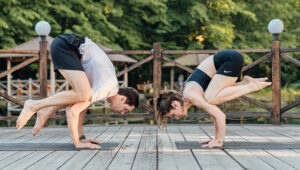
A majority of those who practice yoga do it as an individualistic practice and gain...

As we get older and take some of the stress that life throws our way,...

When you think of yoga, the first thing that probably comes to your mind is...

Whether you are looking to get in shape, or simply just improve your overall health...


